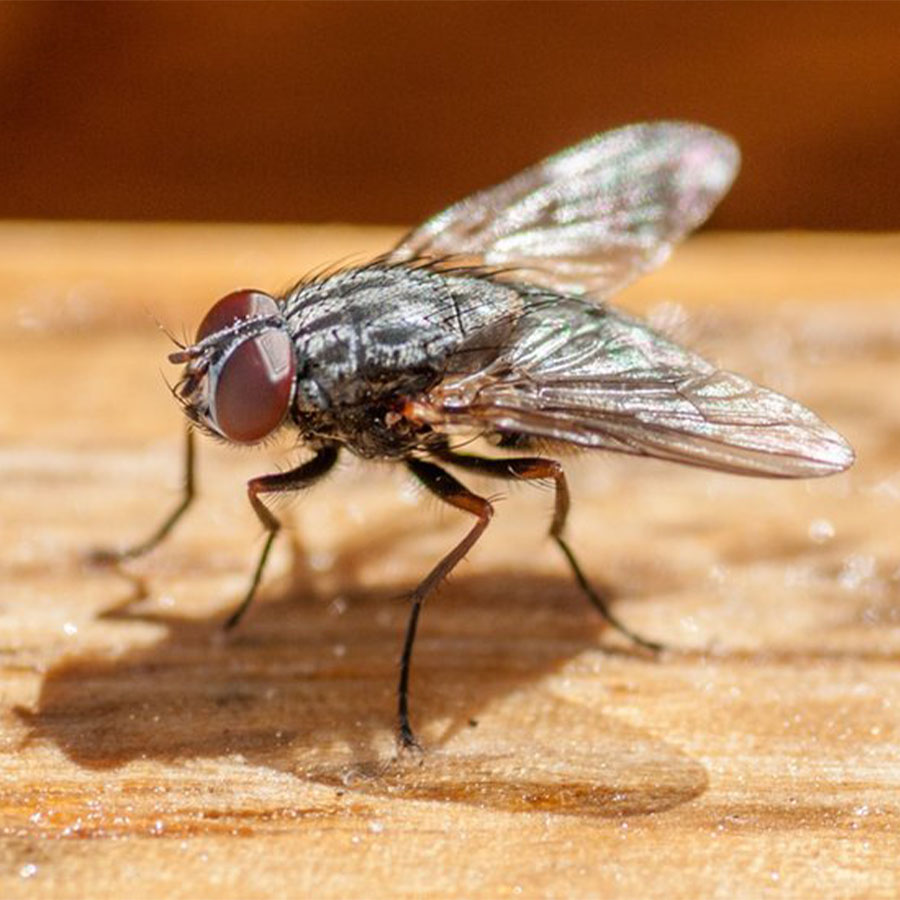Definition:
Flies are a large group of many different species such as houseflies, carrion flies, bottle flies, face flies, etc., with one pair of wings, grey or metallic colours and can spread important diseases. In addition to these, it also includes species such as Sewage Flies, Fruit Flies, Mushroom Flies, which do not transmit diseases, but cause discomfort.
Behaviour
The two elements that attract flies the most are light and odour. Black flies are attracted to organic waste such as rotting meat and faeces. Fruit flies (vinegar flies) are attracted to sugary substances. They can be seen flying around ripe fruit, alcohol and spilled fizzy drinks. Manhole flies need moist environments and organic matter. They lay their eggs in drain pipes containing both moisture and organic waste. For this reason, they are often seen in the bathrooms of houses.
The life cycle of flies is complete metamorphosis: Egg-Larva-Pupa-Adult.
Larvae and adults feed in different environments. This information is important for the formulation of a control strategy.
Prevention:
- First of all, determining which type of fly the fly is will help to choose the appropriate control method. It also helps to determine the place of reproduction and feeding.
- After determining the feeding and/or breeding area of the fly, cleaning these areas in detail will prevent the recurrence of the problem.
- Measures such as mosquito nets, air curtains, etc. to prevent the entry of flies from outside.
Consult an expert for help.



